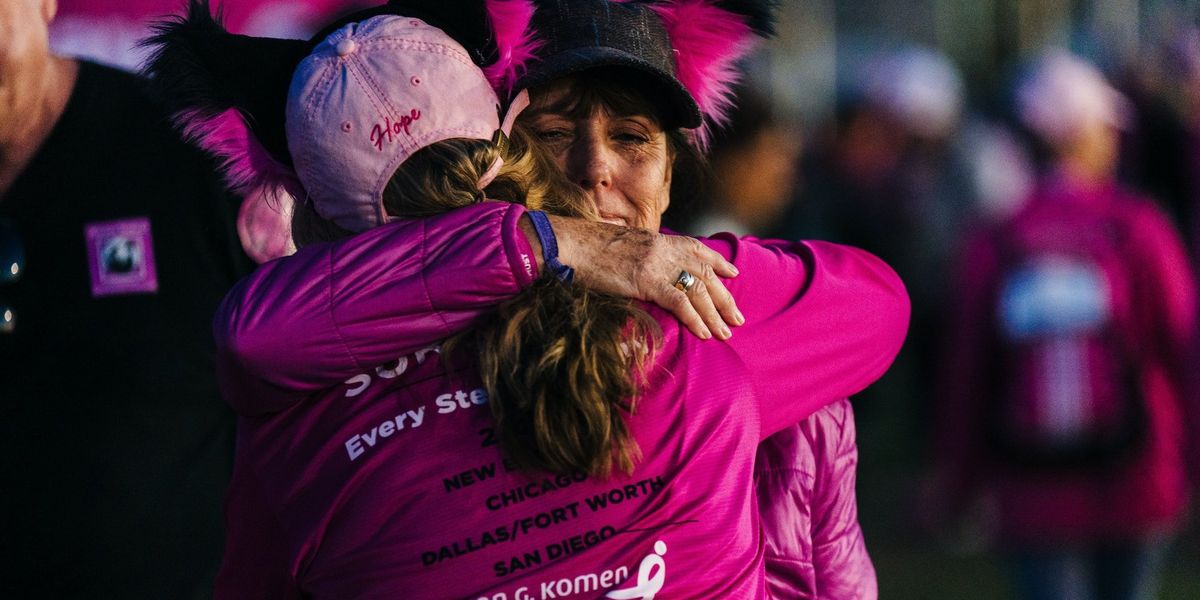
October is breast cancer awareness month, and alongside the ubiquitous pink ribbons is the usual advice for prevention: Don’t smoke, focus on diet and exercise, and do regular exams.
But there’s a major opportunity for breast cancer prevention that’s often overlooked — preventing exposure to harmful chemicals.
Up to 95% of cancer cases are preventable, but only 7% to 9% of global cancer funding goes toward prevention. That small portion of funding tends to focus on early detection, which is important, but isn’t actually prevention since it’s aimed at catching the disease early rather than stopping it from occurring in the first place.
I saw the consequences of this missed opportunity firsthand while researching and writing my book, A New War on Cancer: The Unlikely Heroes Revolutionizing Prevention, where I learned that many of the chemicals we encounter in our everyday lives are increasing our cancer risk.
Carcinogens banned elsewhere, but used in the US
Unfortunately, carcinogens and endocrine-disrupting chemicals are poorly regulated in the U.S., so they regularly show up in our food, drinking water and personal care products. These are generally small exposures, but research indicates that they’re adding up to increase cancer rates in big ways, and even to increase breast cancer risk for our daughters and granddaughters.
Many of the chemicals commonly found in products in the U.S. have been banned in other parts of the world. For example, brominated vegetable oil, potassium bromate and propylparaben, all of which are linked to increased cancer risk, are among a long list of food additives that have long been banned in the European Union and other countries but are still regularly used in processed foods in the U.S.
Similarly, cosmetics sold to Americans regularly contain chemicals linked to cancer risk like formaldehyde, asbestos, PFAS, parabens and phthalates that are banned in cosmetics sold in other parts of the world. The chemicals found in cosmetics pose a particular risk when it comes to breast cancer, since women use twice as many personal care products as men, applying an average of 168 chemicals to their bodies every day.
Beauty injustice
Women of color face even higher risk. Studies have shown that women of color use more products on their hair and skin each day than their white counterparts, and that products marketed to women of color tend to be more toxic and are more likely to contain chemicals associated with increased cancer risk compared to products marketed to white women.
This is particularly true for hair straighteners and relaxers. A 2020 study found that women who used chemical hair straighteners more than six times a year had about a 30% higher risk of breast cancer.
Where are the public awareness campaigns about these statistics during breast cancer awareness month? And more importantly, why are products capable of raising our breast cancer risk so significantly still on the market?
At least 80 other countries have enacted more stringent regulations on chemicals in cosmetics than the U.S. For example, the European Union has banned or restricted more than 2,400 chemicals in cosmetics, while the U.S. has banned or restricted just nine chemicals. We don’t need our lawmakers to reinvent the wheel here — the blueprints for basic, sensible chemical regulations are already out there, ready to be implemented.
States step up
In the absence of meaningful federal regulations, states are stepping up. California recently banned 26 toxic chemicals in personal care products and four common toxic food additives. The law, which will be implemented in 2027, will likely protect all Americans, since it’s generally more costly for manufacturers to make separate versions of products to sell in different states than it is to just change their formulas . Similarly, Washington, Colorado and Minnesota are among numerous states that have passed legislation banning or restricting PFAS in consumer products that will likely protect those of us living in other states, too.
What can I do for breast cancer prevention?
The good news is, there are lots of reasons for hope. In A New War on Cancer, I profiled researchers, activists and policy advocates who’ve devoted their lives and their careers to solving these problems. I learned about the growing number of organizations that are advocating for safer chemical policy, including Breast Cancer Prevention Partners, Silent Spring Institute and the Cancer Free Economy Network. These efforts are making an impact.
The rest of us can contribute by letting our local, state and national lawmakers know that breast cancer prevention through meaningful chemical regulations is important to their constituents. And we can apply market pressure by telling the companies making toxic products that consumers are demanding better.
While we push for these big picture changes that could prevent many cases of breast cancer, we can also take steps in our own lives to minimize our exposure. Resources like Clearya, Made Safe and the Healthy Living App can help us choose safer foods and personal care products. We can invest in home water filters that remove carcinogens like PFAS and home air filters that remove carcinogens from indoor air pollution. And we can help spread the word to the other women in our lives that there’s more to breast cancer prevention than donning pink ribbons every October.

